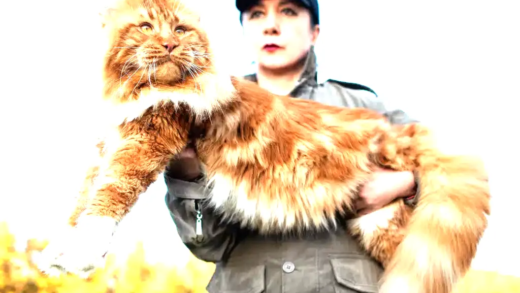Bottle trees serve as colorful symbols of culture and spirituality, originating from African traditions and evolving into artistic expressions in modern gardens. Their journey reflects resilience, community engagement, and personal creativity, inviting stories and connections among enthusiasts.
What are bottle trees?
Bottle trees are unique structures made by inserting glass bottles into the branches of trees or poles. They are often colorful and serve as both decorative art and cultural symbols. The construction of bottle trees typically involves selecting a sturdy tree or pole, and then securely placing bottles upside down on the branches or at the top. This method ensures that the bottles do not fall out and creates an eye-catching display.
These trees can vary in size and design, often reflecting the personal style of the creator. Some people use vibrant colored bottles to enhance the visual appeal, while others may prefer a more rustic look. The placement of the bottles is important, as it can affect the overall aesthetic and meaning behind the tree.
The origin story of bottle trees
The tradition of bottle trees has its roots in African culture, particularly among the Congolese people. Originally, these trees were believed to trap evil spirits, preventing them from entering homes and causing harm. The practice was brought to America through the transatlantic slave trade, where it evolved and adapted to fit the new cultural landscape.
In the Southern United States, particularly in Louisiana, bottle trees became a part of the local folklore. They were often used in African American communities as a way to honor ancestors and protect against malevolent forces. This cultural adaptation highlighted the resilience of traditions and the importance of spiritual beliefs in everyday life.
Spiritual significance in the Congo
In Congolese culture, bottle trees hold significant spiritual meaning. They are often seen as protective talismans, designed to ward off evil spirits and misfortune. The bottles, usually made from vibrant glass, are believed to attract good spirits while trapping the bad ones. This duality reflects the balance of positive and negative forces in life.
Moreover, bottle trees are sometimes associated with ancestor veneration. They serve as a physical representation of connection to the past, allowing individuals to honor their lineage and cultural heritage. This spiritual significance underscores the importance of community and the role of cultural symbols in maintaining traditions.
Journey to America
Bottle trees made their way to America during the 19th century, particularly through the experiences of African slaves. As these individuals settled in the Southern states, they brought with them their cultural practices, including the creation of bottle trees. Over time, these trees became integrated into the local landscape and were embraced by various communities.
In the U.S., bottle trees have evolved into a popular folk art form. They are often featured in gardens and yards, celebrated for their whimsical charm and vibrant colors. The adaptation of bottle trees in American culture highlights the blending of traditions and the ongoing evolution of cultural symbols.
Materials used for creation
The construction of bottle trees typically requires a few essential materials:
- Glass bottles: The most critical element, often sourced from recycled materials or purchased in various colors.
- Tree or pole: A sturdy base to support the bottles, which can be a living tree or a decorative pole.
- Tools: Basic tools may be needed for cutting or securing the bottles, depending on the design.
Choosing the right materials can impact both the aesthetic and durability of the bottle tree. For instance, using thicker glass bottles may enhance longevity, while colorful bottles can create a more visually striking effect.
Color meanings of bottles
Bottle trees often feature glass bottles in a variety of colors, each carrying its own unique significance. Understanding these meanings can enhance the spiritual and aesthetic value of a bottle tree. Here are some common bottle colors and their associated meanings:
- Blue: Represents peace and tranquility. It is believed to attract good spirits and create a calming environment.
- Green: Symbolizes growth and fertility. Green bottles are often used to promote health and prosperity.
- Red: Signifies strength and passion. Red bottles are thought to ward off negative energy and bring vitality.
- Amber: Often associated with warmth and protection. Amber bottles can serve as a shield against misfortune.
- Clear: Represents clarity and purity. Clear bottles allow light to shine through, enhancing the overall beauty of the bottle tree.
Incorporating various colors into a bottle tree can create a vibrant display while also tapping into the deeper meanings associated with each hue. Gardeners often choose specific colors based on personal beliefs or desired outcomes, making each bottle tree a unique expression of creativity and spirituality.
Bottle trees in modern gardens
Today, bottle trees have found a cherished place in gardens across the globe. They serve not just as decorative elements, but also as conversation starters and reflections of personal style. Gardeners incorporate bottle trees in various ways:
- Colorful focal points: Positioned as centerpieces in flower beds or at garden entrances, bottle trees can draw the eye and add a playful touch to the landscape.
- Vertical interest: Bottle trees add height to gardens, breaking up flat landscapes and creating visual dynamics.
- Ecological benefits: Some gardeners use bottle trees to attract beneficial insects or birds, contributing to the local ecosystem.
- Personal expression: Many enthusiasts customize their bottle trees, using bottles that hold personal significance or reflect their favorite colors.
With their whimsical charm and vibrant colors, bottle trees continue to inspire creativity in modern gardening, blending art with nature in delightful ways.
Folklore and stories
Bottle trees are steeped in rich folklore, with stories that add to their cultural significance. One popular tale speaks of a bottle tree that grew in a small Southern town. Legend has it that the tree was planted by a wise elder who believed it would protect the community from evil spirits. Over time, the tree became a gathering place for locals, who would share stories and celebrate life beneath its colorful branches.
Another captivating story involves a traveler who stumbled upon a bottle tree in a remote village. Intrigued by its beauty, he learned that the tree had been a source of hope for the villagers during hard times. They believed that each bottle contained a wish, and as the sun set, the vibrant colors would shine, illuminating their dreams.
These tales, among many others, highlight the enchanting connection between bottle trees and human experience. They serve not only as decorative features but also as vessels of history and storytelling, enriching the cultural landscape.
Practical uses beyond decoration
Bottle trees may be seen primarily as artistic expressions, but they also serve practical purposes. Here are a few ways in which bottle trees can be functional:
- Wind chimes: Some gardeners incorporate bottles that produce sound when struck by the wind, creating a melodious atmosphere in the garden.
- Sun catchers: The glass bottles catch and refract sunlight, adding a magical glow to outdoor spaces.
- Support for climbing plants: Bottle trees can provide a structure for vines and other climbing plants, enhancing the garden’s overall aesthetic.
- Wildlife attractors: The colorful bottles can draw butterflies and birds, promoting biodiversity within the garden.
In this way, bottle trees not only beautify spaces but also contribute to the ecological and sensory experiences in gardens, blending form with function beautifully.
Evolution of Design and Meaning
Bottle trees have undergone significant evolution in both design and meaning throughout history. Initially rooted in African traditions, their purpose was primarily spiritual, aimed at protecting homes from evil spirits. As they transitioned to America, particularly in the Southern states, their designs began to reflect local aesthetics and cultural narratives.
Modern bottle trees exhibit a variety of styles, often integrating elements of personal expression and artistic flair. From whimsical designs featuring brightly colored bottles to more minimalist approaches, the evolution of bottle trees mirrors changing societal values. Today, they are not just spiritual symbols but also artistic statements, reflecting the creativity of their makers.
This transformation highlights how cultural practices adapt over time, blending historical significance with contemporary interpretations. Gardeners and artists alike embrace bottle trees as symbols of resilience and creativity, showcasing how traditions can evolve while retaining their core meanings.
Share Your Stories
Personal experiences with bottle trees can enrich the narrative surrounding them. Many individuals have unique stories about how bottle trees have impacted their lives or gardens. For instance, some might recount how they crafted their first bottle tree as a family project, bonding over the colorful bottles and shared creativity. Others may share tales of discovering bottle trees while traveling, and how these encounters sparked a love for gardening or folklore.
Encouraging readers to share their stories fosters a sense of community. Engaging with others who appreciate the charm and significance of bottle trees can lead to deeper connections and inspire new ideas for incorporating these unique structures into personal spaces. Each story adds a layer to the collective understanding of bottle trees, highlighting their role in personal and cultural storytelling.
Final Thoughts on Bottle Trees
Bottle trees represent a fascinating blend of culture, spirituality, and artistry. Originating from African traditions, their journey to modern gardens illustrates the resilience of cultural practices. These structures not only serve as protective symbols but also as vibrant expressions of personal creativity.
The significance of bottle trees extends beyond mere decoration. They invite reflection on heritage, community, and the interplay between art and nature. As more people discover and embrace bottle trees, they continue to foster a connection to the past while inspiring future generations. Through their colorful presence, bottle trees remind us of the stories, beliefs, and creativity that shape our lives today.





Comments are closed.